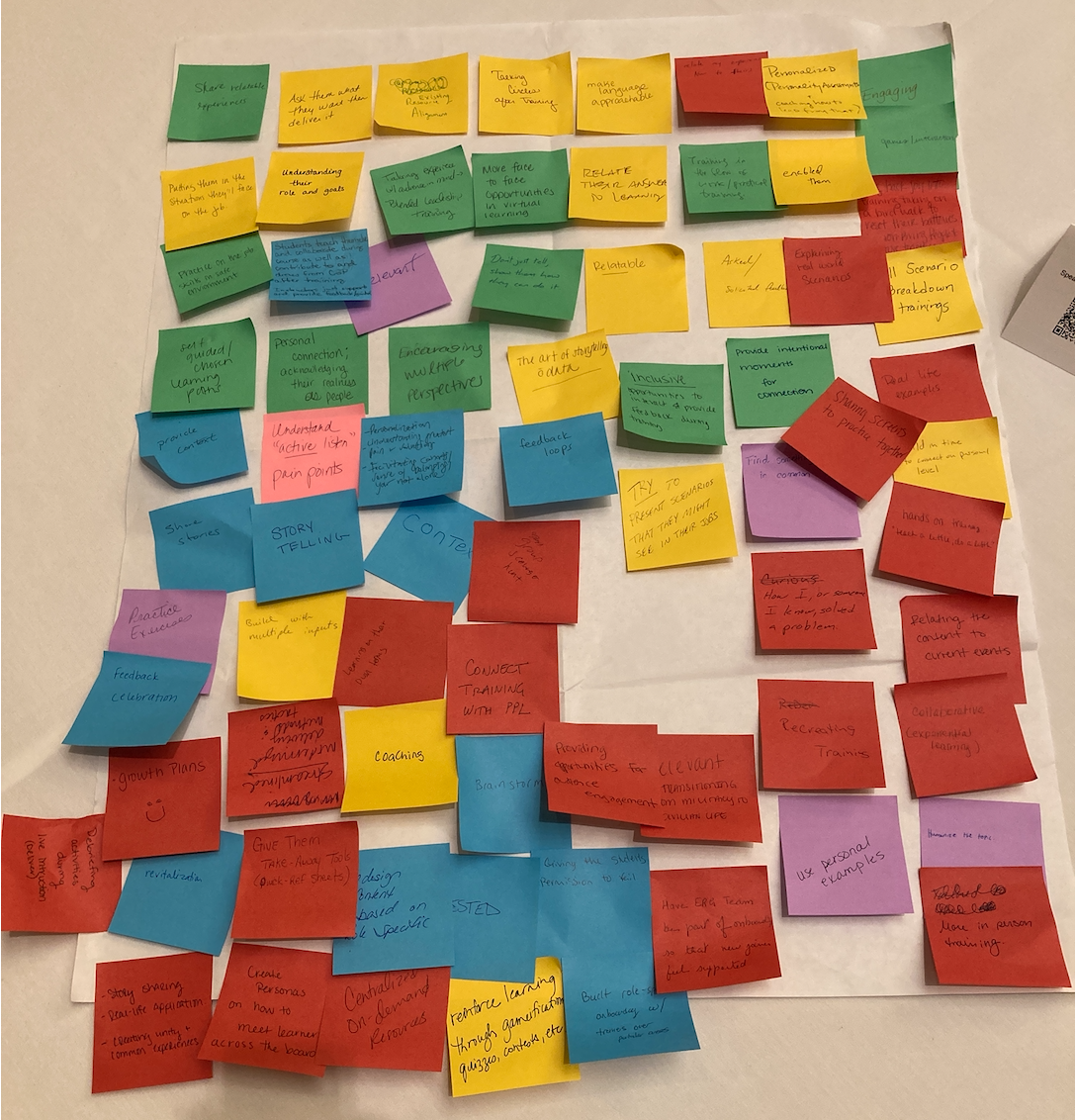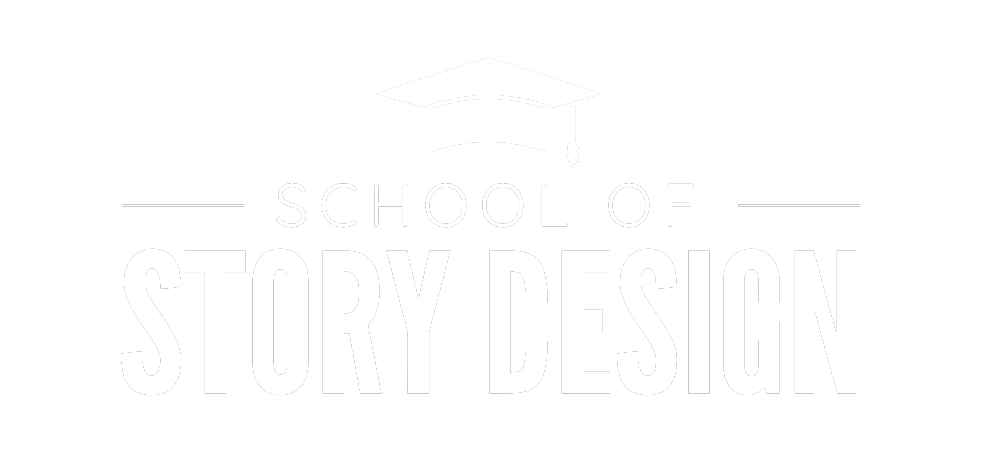Strategies for Humanizing Training
Jul 27

What TD pros are doing now
This is a follow-up post to A Foundationally Human Approach to Instruction, where I recounted interactions with fellow talent development professionals who attended my session at ATD's Core4 conference in July of 2022. One of the activities they did during the session was to list one way they were moving their instruction toward a more humanized experience. Their suggestions, posted on sticky notes (photo below), are difficult to read in the picture, but I recorded all of their answers and categorized them in a document for you to download. Read through their suggestions. Might one of these ideas resonate with your learning audience? Here's a summary of my observations:

What's being done
Out of the 70 or so ideas represented on these sticky notes, about half are conceptual ("Provide context, Give students permission to fail, Share relatable experiences") and half are practical("Make language approachable, Talking circles after training, Sharing screens to practice together") The document divides ideas into these two categories.
Though these are not full-out strategies (there's only so much you can write on a sticky note!) it is healthy to consider what others are doing and how your learning audience may benefit from someone else's work. Plus, how often do we actually take time for the purpose of building a strategy? Let this exercise be a catalyst for for you!
Is there a silver bullet?
Possibly. I don't think I would go as far to say that Story Design will fully solve all of your humanized training needs, but it can go a very long way. Consider the suggestions mentioned above.
-
Provide context
-
Give students permission to fail
-
Share relatable experiences
Can stories provide context? Yes. Can stories set students up for activities that give them permission to fail? You bet. Can stories encourage the sharing of relatable experiences? Stories are one of the primary ways we do this in real life. Check! What about these?
-
Make language approachable
-
Talking circles after training
-
Sharing screens and practicing together
Do stories make language approachable? Absolutely! Conversational language is normal for stories. What about talking circles after training? Can you think of a better way to start a talking circle than discussing the story from training? Stories can rock this! Will stories facilitate sharing screens and practicing together? Okay, you don't really need a story to do that one...but a story wouldn't hurt.
How do stories work in practice?
Imagine that you are taking an eLearning course. The first thing you engage with is not a list of learning objectives (WHAT!?). No, the first thing you view is a story. The characters are relatable, there's strong conflict. As the action of the story unfolds, you're thinking. "What are they doing? Why are they doing it that way? Oh yeah, I've been there before. How are they going to get out of this?" The story ends. You feel this need for resolution.
Nice story. So what?
After the story, you're asked how you think the main character feels. You choose some of the options because you think the main character is probably feeling more than one emotion after all that conflict. The course affirms your choices and asks you why you think the main character feels that way. Hm...now you have to think back to the story: "What was it he said to her? How did she perform that task? Why was I uncomfortable when they did that?" What you instinctively picked up on in the story now has to be verbalized in some way. You type your observations into a text field. Your observations show up on the next slide ("Cool!") and you're asked to solve a problem...from the story, keeping your observations in mind. The problem is complex, the choices all seem plausible. You make a choice. It's not the best choice. The feedback doesn't read "Try again." It actually gives you some really valuable information that helps you understand why your choice is wrong. ("Nice! I'll keep that in mind, for sure!") It even provides a resource to help make a better choice. This time you choose and the answer is correct. The feedback gives you the reasons behind why that choice was the best one.
The Story Design way
What you've just experienced is the Instructional Story Design way of training. To sum up this structure, it looks like this:
STORY > REFELECT > SOLVE > FEEDBACK
-
Tell the story first.
-
Ask the learner to reflect on the story.
-
Ask the learner to solve something based on the story.
-
Give the learner feedback on their answers.
Variations of this structure has been used thousands of times by instructional designers who have adopted Instructional Story Design, with incredible success. Hearkening back to my former post on Humanized Learning, this structure respects the learner's abilities to observe the story, critically think about what just happened, solve a problem and receive instruction. (Notice that the instruction--feedback--happens at the very end!)
Story Design builds in the humanizing abilities of the learner to intellectually and emotionally solve problems.

Training comes to life at the School of Story Design. Instructional designers learn how to write, produce and train with stories for meaningful learning experiences.
Copyright © 2026
Emails are coming your way!

